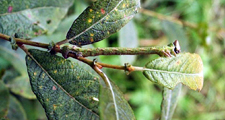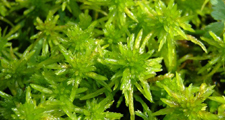Birch Woodland – W4
Betula pubescens – Molina caerula woodland.
Region
W4 communities are rare in Durham. They are likely to have occurred more widely on mires and wet heaths in the upland fringes of the North Pennines, Coalfield Pennine Fringe and Pennine Dales Fringe.
Character
Open woodland on the edges of bogs and mires.
Geology
Peats.
Soils
Peats, peaty gleys.
Species
Downy Birch is the dominant species with occasional Goat Willow, Common Alder, Grey Willow, Eared Sallow, Bay Willow or Rowan.
Ground flora and fauna
Purple Moor Grass, Sphagnum and other mosses. Broad Buckler Fern. Soft-rush.
Structure
Usually an open low (6-8m) canopy of widely spaced, often multi-stemmed trees. Birch is dominant, other species occurring as scattered specimens or local concentrations reflecting soil/drainage patterns.
Management Principles
- Timber production is rarely practical or desirable. Low intervention approaches are best.
- Maintain the wetness of the site – avoid changes in hydrology through on or off-site drainage.
- Light grazing is often a natural part of the ecology of wet birch woods – stock may need to be periodically excluded to promote regeneration & overstocking should be avoided.
- Birch and willow regenerate well on wet ground – planting is rarely necessary.
- Maintain and increase the numbers of old trees and dead wood.
- Avoid damage from the tracking of vehicles or poaching by stock
- Maintain areas of open ground.
Planting Sites for New Woods
On many suitable sites the existing vegetation will be of sufficient value to preclude tree planting. In many suitable areas the landscape will be very open and tree planting may not be appropriate. Degraded fell land on humic gleys and peats. Woodland / wetland interfaces.
Design Principles
Mosaics of woodland and heath. Stands in oak-birch woodlands on wetter ground.
Further information
Forestry Commission Forestry Practice Guide 8: Wet Woodlands can be downloaded from Forestry Commissions Publications pages.



